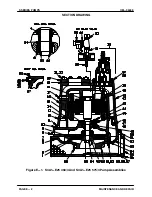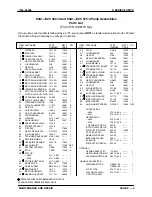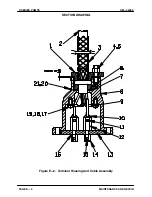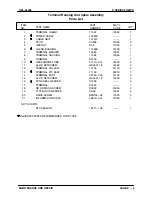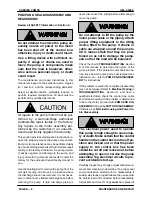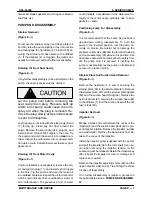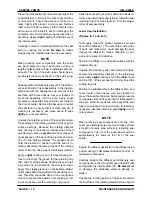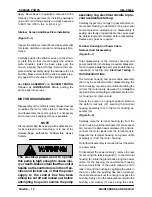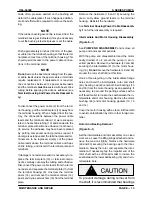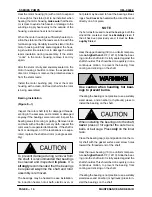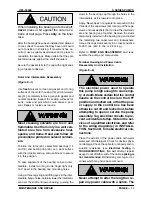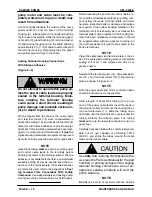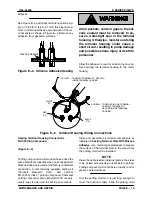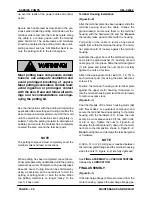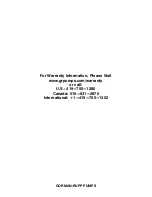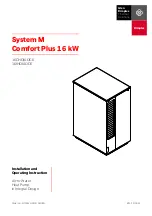
OM-06098
S SERIES PUMPS
PAGE E - 15
MAINTENANCE AND REPAIR
ple is removed, apply `Loctite Retaining Com
pound No. 680 or No. 620' or equivalent com
pound on both ends of the nipple
only
.
When installing the relief valve, use `Loctite Pipe
Sealant With Teflon No. 592' or equivalent com
pound on the threads. Position the valve out of the
way, next to the terminal housing (8, Figure E-2)
so there is enough room for the terminal housing to
clear.
Hoisting Bail
(Figure E-1)
If the hoisting bail (23) requires replacement, re
move the hardware (24, 25 and 26) securing the
bail to the motor housing. Make sure the bushings
(27) are in place when installing the hoisting bail.
MOTOR REASSEMBLY
Do not attempt to rewind the stator. Wind
ing tolerances and materials are closely
controlled by the manufacturer, and any
deviation can cause damage or operating
problems. Replace the stator, or return it to
one of The Gorman‐Rupp Authorized Sub
mersible Repair Centers or The Gorman‐
Rupp factory, if defective.
NOTE
Reuse of old O‐rings, gaskets, shaft seal parts will
result in premature leakage or reduce pump per
formance. It is strongly recommended that new
gaskets and shaft seal assemblies be used during
reassembly (see the parts lists for numbers).
Stator Installation
(Figure E-1)
NOTE
Stator installation involves heating the motor hous
ing. This process must be done quickly. Therefore it
is recommended that these steps be performed by
two people to promote efficient installation of the
stator.
Clean all gasket and O‐ring surfaces of the motor
housing (16), completely removing any old gasket
and cement material. Inspect the sealing surfaces
for burrs, nicks and pits which could cause a poor
seal, and replace defective parts as required.
Thoroughly clean the inside of the motor housing
with fresh solvent. The interior
must
be dry and free
of dirt or lint.
Most cleaning solvents are toxic and
flammable. Use them only in a well ven
tilated area; free from excessive heat,
sparks, and flame. Read and follow all
precautions printed on solvent contain
ers.
After the motor housing is thoroughly cleaned, po
sition it on a flat surface with the discharge end
down. Do not unwrap the stator (39) until the motor
housing has been prepared for stator installation.
The stator
must
be kept clean and dry. When han
dling the stator, do not set it on the end windings;
lay it on its side and block it from rolling.
Test the new stator as indicated in
Electrical Test
ing
in
TROUBLESHOOTING
, Section D, to ensure
that no damage has occurred during transit or han
dling.
NOTE
Remove any drops of varnish from the ends of the
stator before installation to ensure proper stack‐up
height when assembled.
Position an expandable tool, such as a split disc,
approximately 2 inches (51 mm) down inside the
stator (opposite the lead wire end), and expand it
tightly and squarely on the I.D. Attach a lifting de
vice to the lifting eye of the tool, and carefully lift the
assembly. Take care not to damage the stator end
turns. Slip a sleeve over the stator leads, or tape
them together to protect them during installation.
NOTE
Stator installation involves heating the motor hous
ing. This process must be done quickly to allow the
stator to slide into the motor housing before the
housing cools.


